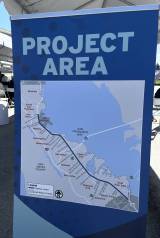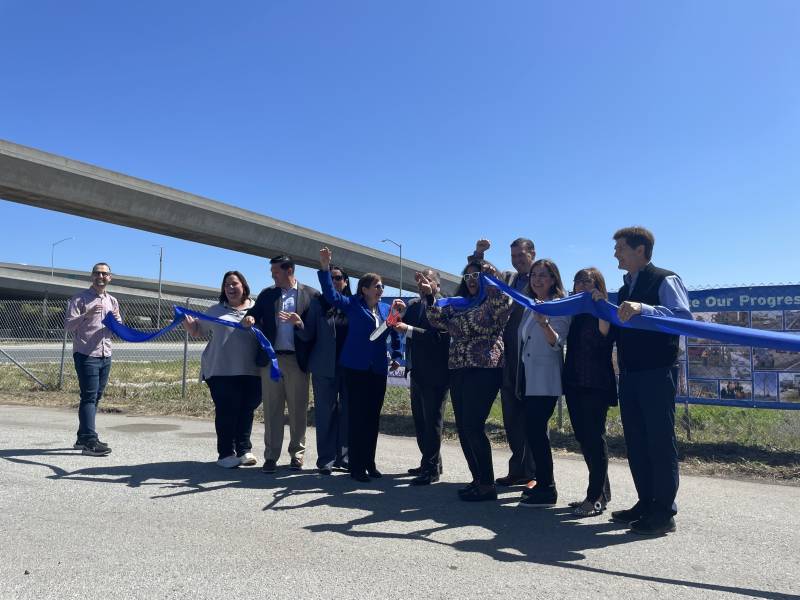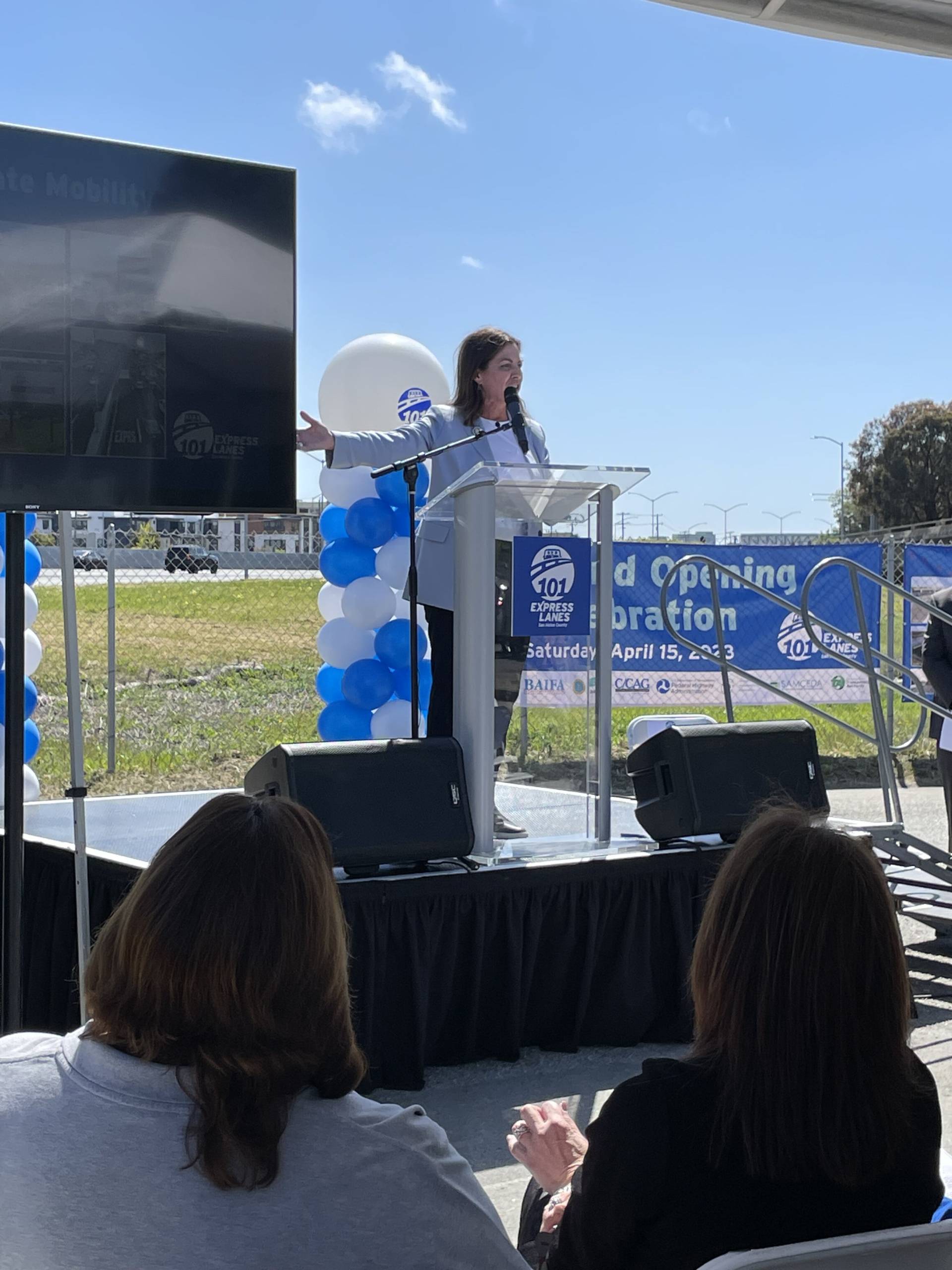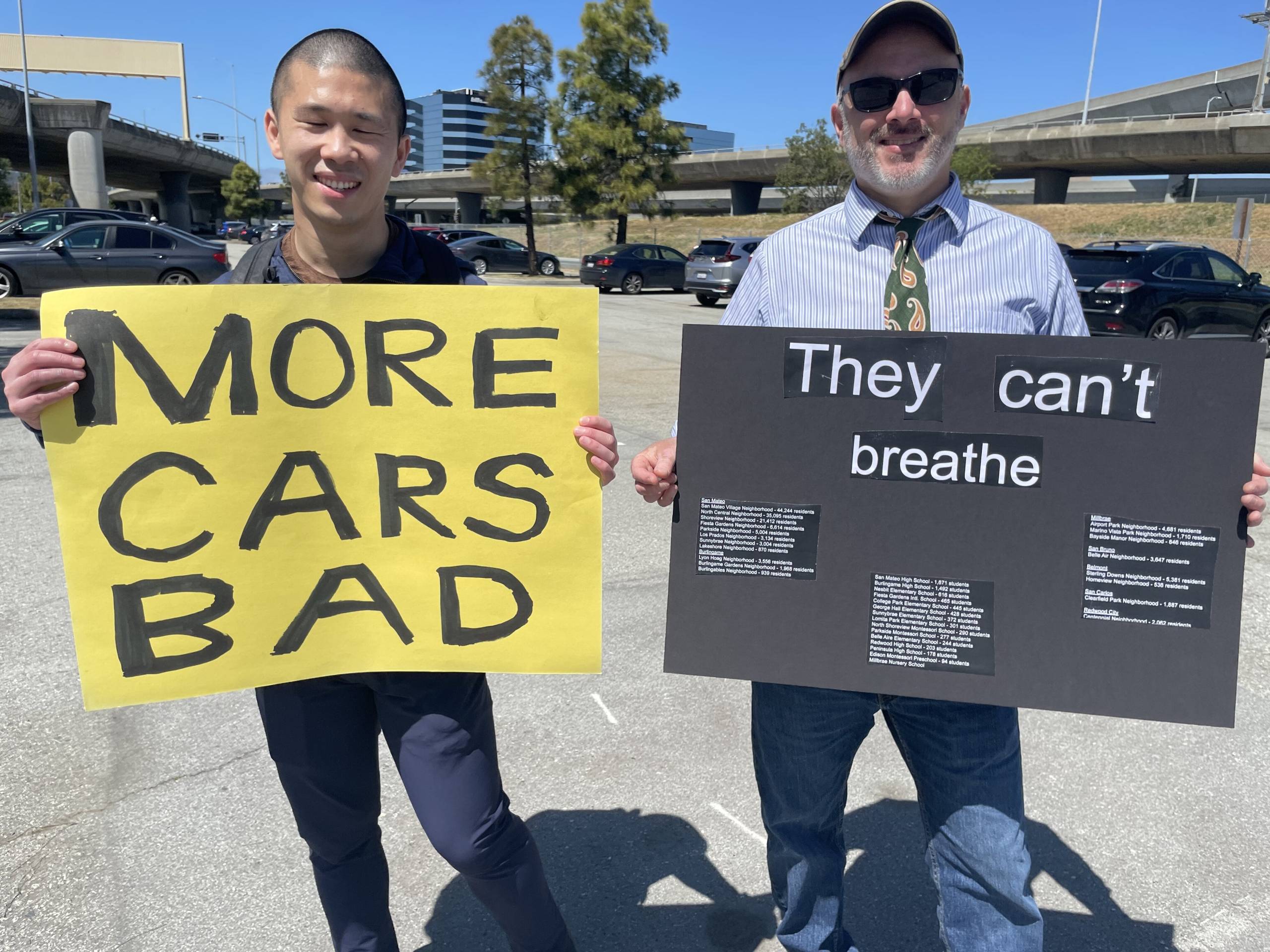The San Mateo 101 Express Lanes Project officially opened in a ribbon-cutting ceremony on Saturday. The 22 miles of express lanes that extend along Highway 101 from the San Mateo/Santa Clara county line to Interstate 380 in South San Francisco are intended to reduce traffic congestion and encourage carpooling and transit use along one of the busiest thoroughfares on the San Francisco Peninsula.
“The express lanes opening in San Mateo County has been years in the making [and] it’s finally come to fruition,” said U.S. Rep. Kevin Mullin of San Mateo, who represents District 15. “It’s good for the economy, it’s good for the environment, and it’s a win for all of the stakeholders who’ve been involved for years now in pulling this project together.”

The $581 million project — funded through a combination of federal, state, local, regional and private contributions — involved Caltrans, the San Mateo County Transportation Authority, the City/County Association of Governments of San Mateo County and the San Mateo County Express Lanes Joint Powers Authority. Construction began in 2019. Attendees of the opening ceremony included Mullin, Assemblymember Diane Papan and San Bruno Mayor Rico Medina.
The lanes, which have been operational since March 3, use “dynamic pricing” to set the toll price, which rises and falls depending on how crowded the lane is, varying between $0.50 and $12.
The project also has an equity component through the Community Transportation Benefits Program (PDF), whereby qualifying San Mateo County residents with incomes of 60% of the county’s average median income (about $70,000) or less can use a Clipper card with a value of $100 provided annually, or a FasTrak toll tag/transponder with a value of $100 provided one time, for use on the express lanes. Vehicles with three or more people, buses, vans and motorcycles can use the express lanes toll-free, with 50% off for vehicles with two people and clean-air vehicles (with a valid clean-air decal from the California Department of Motor Vehicles).



